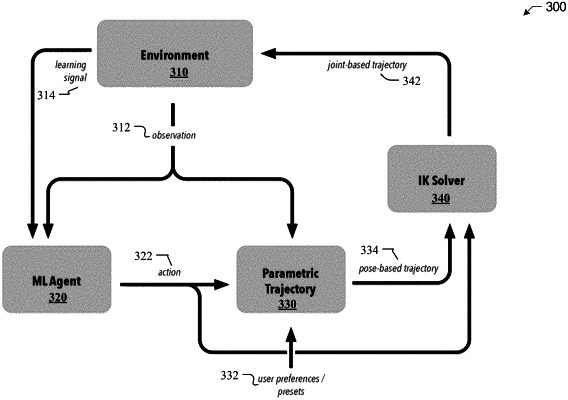| CPC B25J 9/1664 (2013.01) [B25J 9/163 (2013.01); B25J 9/1607 (2013.01); B25J 9/1661 (2013.01); B25J 13/088 (2013.01)] | 20 Claims |

|
1. A method comprising, by a robotic system:
accessing, for a task to be executed by the robotic system, a trajectory plan to complete the task, wherein the trajectory plan constrains one or more first degrees of freedom of the robotic system and underconstrains one or more second degrees of freedom of the robotic system;
determining, using a trained machine-learning model for the robotic system and based on information associated with an environment associated with the robotic system, one or more actions that constrain the underconstrained second degrees of freedom of the robotic system without adjusting the constrained one or more first degrees of freedom of the trajectory plan;
determining, based on information associated with the environment, an adjustment to the trajectory plan for at least one of the one or more first degrees of freedom without adjusting the determined one or more actions, wherein one or more pose-based waypoints and one or more joint positions of the robotic system are defined by the adjusted trajectory plan and the one or more actions;
determining, based on the one or more pose-based waypoints, one or more joint-based waypoints for the trajectory plan; and
executing the task based on the one or more joint-based waypoints for the trajectory plan.
|